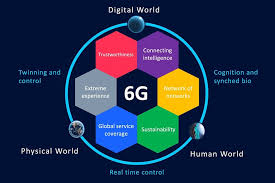Cell-Free Massive MIMO Training for Future Networks
telcomatraining.com – As we move towards the next generation of wireless communication systems, Cell-Free Massive MIMO (Multiple-Input Multiple-Output) is emerging as a groundbreaking solution that promises higher network capacity, lower latency, and enhanced user experience. This technology transforms traditional cellular networks by eliminating the concept of cells and replacing them with a distributed network of antennas working in coordination. One of the critical aspects of developing this system is the training process of the massive MIMO network, which plays a pivotal role in ensuring optimal performance for future networks.
Understanding Cell-Free Massive MIMO
In traditional cellular networks, communication is organized around a central base station that serves a defined geographic area known as a cell. However, with Cell-Free Massive MIMO, there is no need for cells. Instead, a large number of distributed antennas are placed throughout the coverage area, and these antennas work together to serve the users. This arrangement provides uniform coverage and a significant increase in capacity, making it a key candidate for 5G and beyond.
The main advantage of a cell-free system is that it can eliminate interference from neighboring cells, a common problem in traditional cellular networks. This is because the antennas in a cell-free system cooperate to focus signals precisely on the users, ensuring a smoother and more reliable connection. As a result, users experience improved data rates and reduced latency.
The Importance of Training in Cell-Free Massive MIMO
Training in massive MIMO systems refers to the process of learning the channel state information (CSI) between the antennas and the users. The CSI is crucial for the system to allocate resources efficiently, optimize transmission, and minimize interference. In a Cell-Free Massive MIMO network, training becomes even more critical because of the large number of antennas involved and the complex nature of the system.
Unlike traditional MIMO systems, where training can be done in a centralized manner, Cell-Free Massive MIMO requires training to be performed across all the distributed antennas. This decentralized approach poses unique challenges, especially when dealing with the coordination between antennas and the need to minimize energy consumption while still providing high-quality service.
Techniques for Efficient Training in Cell-Free Systems
To ensure effective training in Cell-Free Massive MIMO networks, researchers have developed several techniques aimed at reducing the training overhead and improving the system’s overall performance. Some of these methods include:
1. Distributed Pilot Contention
In Cell-Free Massive MIMO systems, pilot signals are used to estimate the channel state. However, due to the large number of antennas and users, this can lead to increased pilot contamination. Distributed pilot contention is a technique where antennas share pilot signals in a manner that minimizes interference, allowing more users to be served without significant overhead.
2. Low-Complexity Channel Estimation
Another key aspect of efficient training is the use of low-complexity channel estimation algorithms. These algorithms aim to reduce the computational burden of estimating the channel state for all antennas while maintaining accuracy. By using techniques such as compressive sensing and machine learning-based estimation, the system can learn the channel state quickly and accurately without requiring significant resources.
3. User-Centric Training
To further optimize the training process, user-centric methods can be employed, where the antennas prioritize users based on their geographical location and current network conditions. This approach ensures that the system allocates resources effectively and adapts to changing conditions, which is essential for maintaining high throughput and low latency in real-time communication.
The Role of Training for Future Networks
As we move towards 5G and beyond, the need for more efficient training methods in Cell-Free Massive MIMO systems becomes increasingly critical. Future wireless networks will need to support a massive number of devices, all requiring seamless connectivity and high data rates. The ability to train these systems efficiently, while minimizing energy consumption and latency, will be essential for realizing the full potential of next-generation wireless networks.
In summary, Cell-Free Massive MIMO represents the future of wireless communication, offering unprecedented capacity and coverage. The training process plays a vital role in optimizing system performance, and ongoing research into training techniques is essential to make these systems viable for large-scale deployment. By overcoming the challenges associated with training, we can expect a future where wireless communication is faster, more reliable, and more efficient than ever before.







